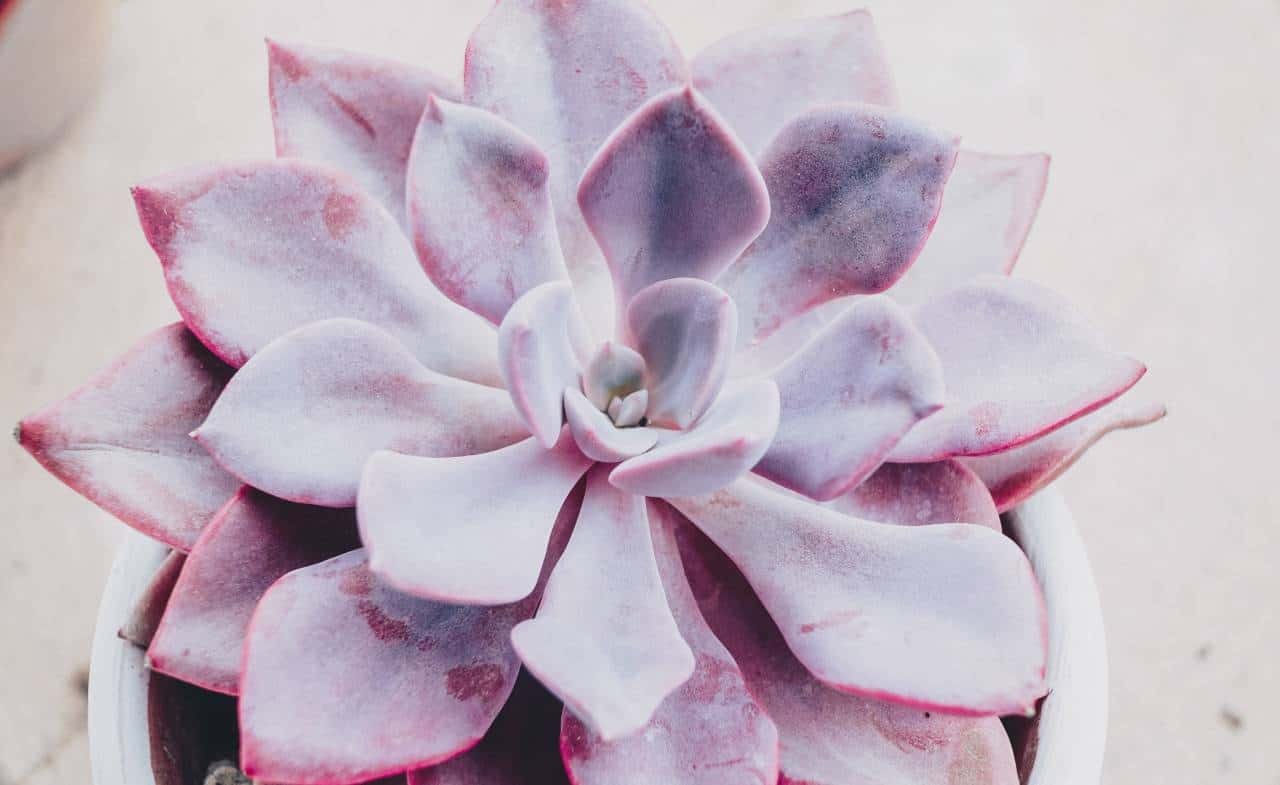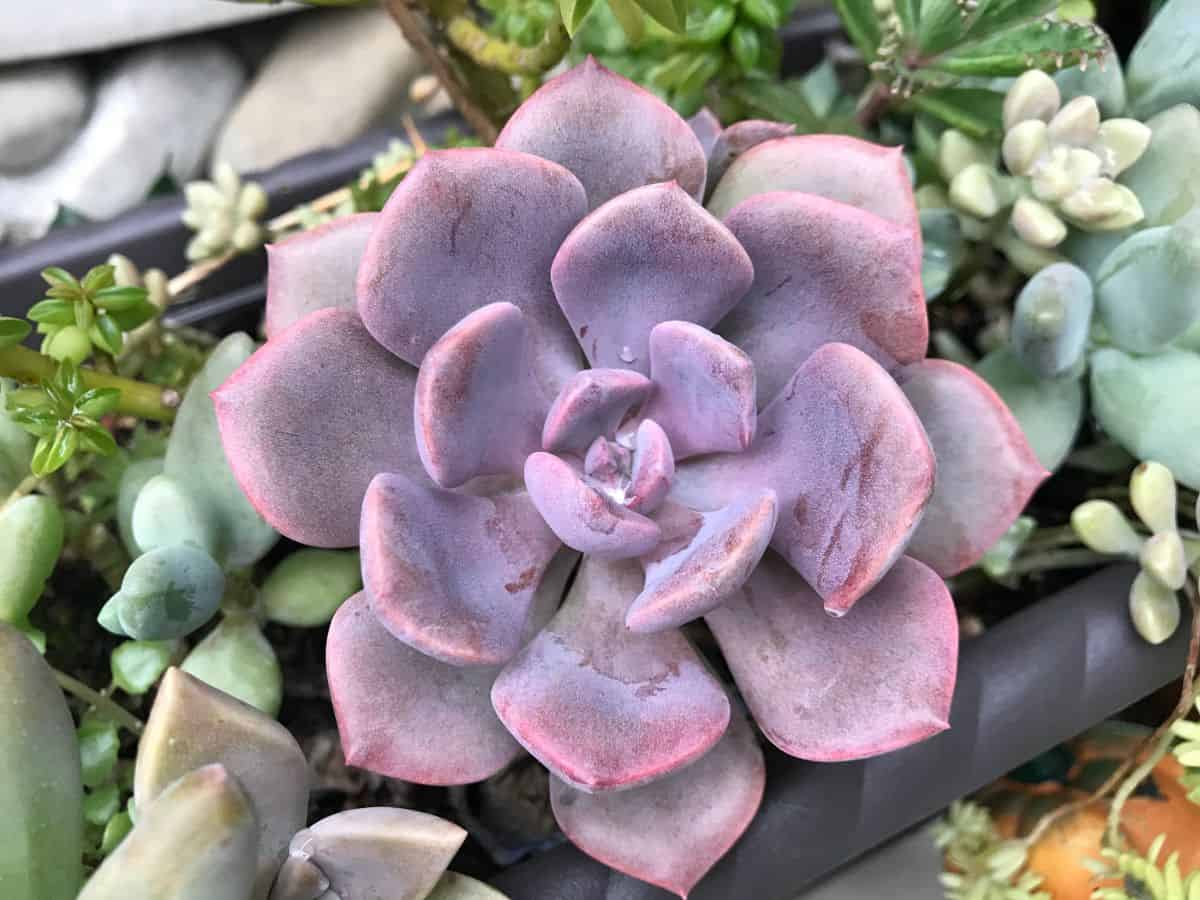
If you love growing succulents, you will love graptoveria succulents aka ‘Debbie’. Succulent growers are always on the lookout for striking succulents with a unique look, and this sure is one of those plants.
In this article, you will learn all about the graptoveria succulent, from how to care for it, to propagation, and more. Dive into this guide and become an expert in graptoveria succulents now. For the purpose of this article, we will refer to this succulent by its well-known street name of Debbie.
Jump to:
Description
| Name: | Graptoveria ‘Debbie’ |
| Soil: | Succulent pottingsoil |
| Blooming: | Spring through summer |
| Light: | Bright light |
| Water: | Dry out completely between waterings |
| Propagation: | Stem cuttings |
The Debbie plant is an echeveria hybrid succulent. It has bluish-purple leaves that develop pink tips when the plant is under healthy stress. This is a great succulent for planting outdoors and indoors, making it very versatile, adding to its popularity. Another feature that makes it popular amongst succulent growers is that it offsets freely, giving growers plenty of opportunities to propagate it.
Debbie’s rosettes can grow up to 20 centimeters in diameter, and it is a rather low-growing plant with a short base. You can expect to see very small apricot flowers blooming from this plant in the spring.
Cultivars and Hybrids
Graptoveria is a hybrid of the Echeveria succulent, although it can also be cross-bred to create the beautiful X graptoveria aka ‘topsy Debbie’ succulent. The topsy Debbie has lilac-grey leaves covered in a waxy coating.
Care
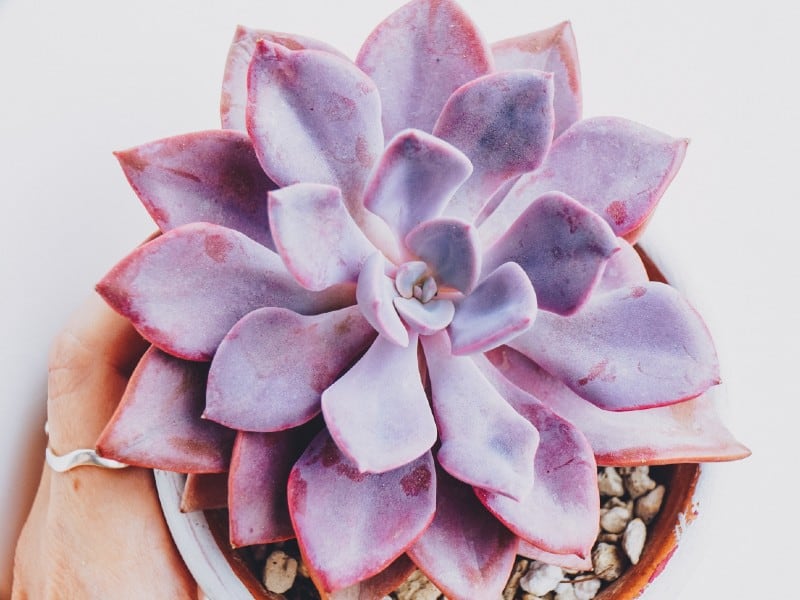
Buy it from:
The Debbie plant has typical care needs for succulent plants. It is not a cold-hardy plant but it is dormant in summer. If you don’t have previous experience caring for succulents, I suggest following this care guide carefully to ensure you don’t miss any important steps.
Succulents have very flexible care needs that change with the seasons or depending on the climate in the area that you live in. You must consider many factors when caring for succulents, which can turn these easy-going low-maintenance plants into complicated plants to look after.
Before making a care plan or schedule for your succulents, you should understand the climate in your area and decide whether you are going to grow the plant in your home, on the balcony, or in the garden. Once you have researched and noted the average temperatures throughout the seasons where you live, you can use the following guidelines to care for your plant.
Light
Graptoveria thrives in full sunlight, but you can place it in partial shade as it will get sunburnt in direct sunlight in hot climates. The soft morning sunlight is generally the most accommodating to Debbie plants as it will stop the plant from becoming sunburnt, and will make its gorgeous cool tones pop.
Being strategic with where you will place the plant is vital that it gets at least six hours of sunlight every day. Here are some of the things to consider when planting your succulent indoors and outdoors, along with some tips and tricks.
Outdoor Plants
You don’t have to have a huge garden to grow a beautiful outdoor succulent arrangement. Succulents are the plants of choice for people with small living spaces and a limited outdoor area.
You can place Debbies on a balcony, in a container garden, and in outdoor succulent arrangements. It is far easier to control the amount of sunlight that the succulent gets if it is not planted directly into the ground. Utilizing pots and containers lets you move the plant around the garden to follow the sunlight and to be placed in shaded areas during strong sunlight.
Top Tip: Don’t surround Debbie succulents with tall plants as they will provide too much shade for the succulent and prevent it from getting at least six hours of light per day.
Indoor Plants
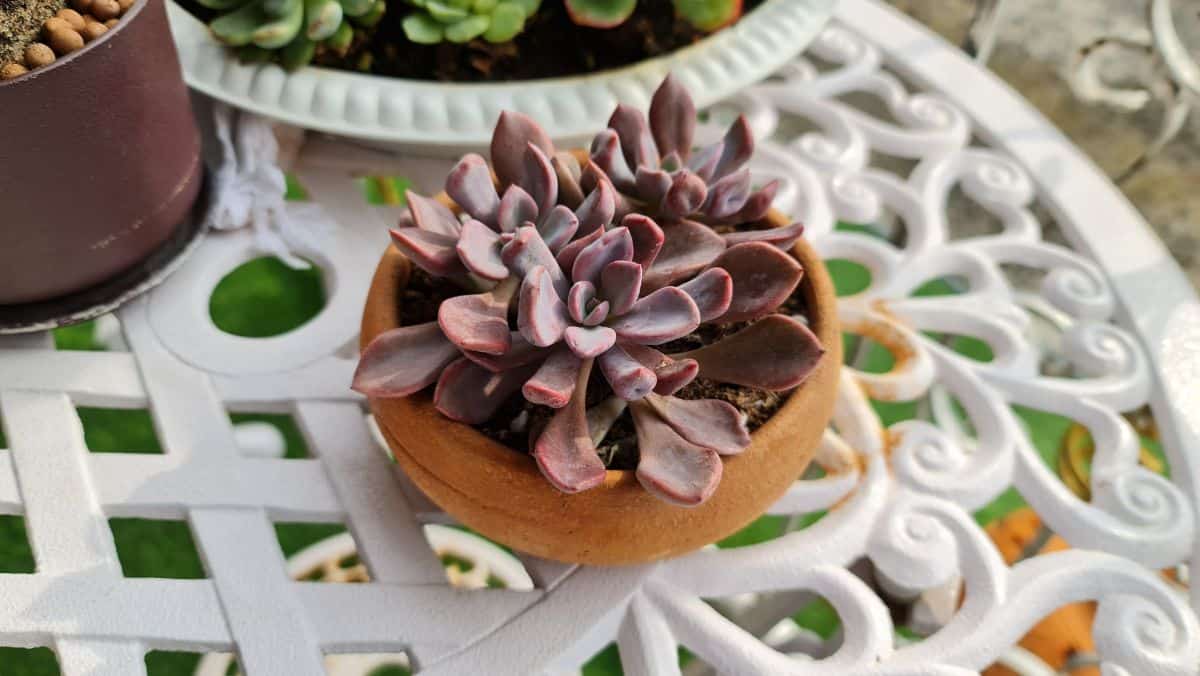
Don’t just think about the most aesthetic place to put your plant, but consider how much natural sunlight the plant will get in that area too. People love succulents because they are dainty little plants that look cute and stylish when they are perched on a desk or on a coffee table.
No products found.
It is much harder to provide indoor plants with enough light to thrive and grow to their full potential, so being strategic with where you put them is very important. Debbie plants should be placed in sunrooms, on sunny windowsills, or in any other area of the room that gets at least six hours of natural sun.
If there isn’t a location inside the house that gets more than three or four hours of natural sunlight per day, then you will need to move the plant throughout the day to give it the amount of sunlight that it needs. This is something that is very easy to forget, so make it a habit or set a reminder on your mobile phone or diary.
Water
You might presume that the Debbie plant needs plenty of water due to all of that heat and sunlight that it gets, but you would be mistaken. Debbie’s need very little water to grow, and their water needs vary greatly throughout the year.
Overwatering graptoveria can cause its roots to rot, whereas underwatering it will lead to the deterioration of its root system. The best way to assess how much water your plant needs is by evaluating the soil.
Never water the plant when the soil is wet or damp. Always wait for the soil to dry out completely before watering the plant. This is called the ‘soak and dry’ method and is common practice for most succulents and cacti. Here is a quick watering guide for you to use:
1.Touch the Soil Daily
Poking your finger into the soil to assess its moisture content is usually suitable for experienced and inexperienced succulent growers. If you want to be as accurate as possible, you could use a soil moisture detector to see how much water is in the soil and calculate your plant’s water needs accordingly.
2. Is it Wet, Damp, or Dry?
Is the soil wet, damp, or completely dry? Knowing the difference between damp and dry soil is very important when it comes to caring for succulents. Watering the soil when it is still damp will cause the roots to rot over time, so avoid doing this at all costs.
3. Water
When the soil has dried out completely and it is time to water your plant, make sure that you water a succulent from the base of the plant. Don’t water Debbie overhead as this could spread diseases.
Water the soil slowly until you see water draining out of the drainage holes from the bottom of the pot. Once the water begins to trickle out of the bottom of the pot, stop watering the plant.
Temperature
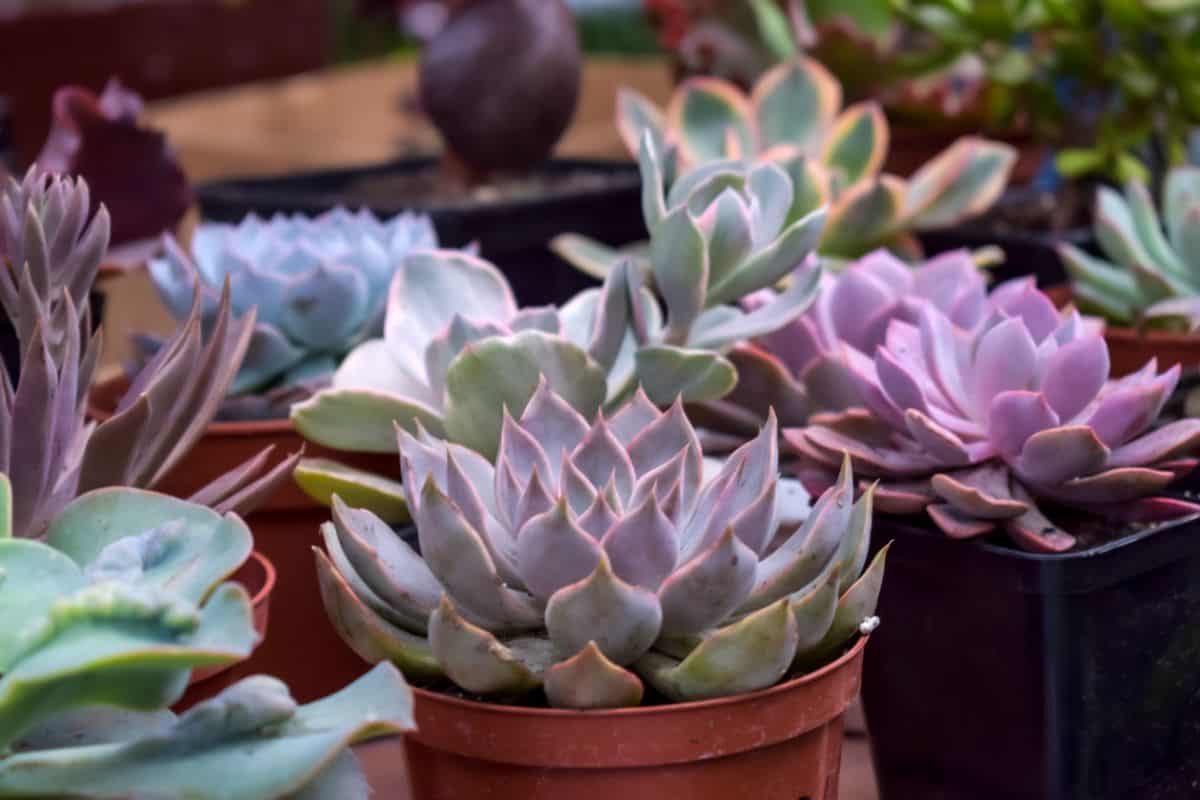
Graptoveria is heat tolerant succulents that grow well in USDA zones 9b to 11b. Never leave this succulent outside in temperatures cooler than 20° F (-6.7° C) as its water-filled leaves could freeze and split.
With that being said, the cooler the plant is in winter, the brighter its leaves will get, and the more striking the succulent will look. This is known as exposing the plant to stress. Stressing succulents takes experience as there is a fine line between exposing the plant to healthy stress and damaging it.
Always bring your plant indoors during below-freezing temperatures, especially if you are new to caring for succulents. You can always alter the temperature and growing conditions indoors to stimulate plant stress.
Soil
The soil and the type of pot you plant your succulents in go hand in hand. Debbie succulents should always be planted in cactus or succulent potting soil, and you can even mix a bit of sand in with the soil if you feel like it is still a little dense.
Soil that drains easily is the best for succulents as it allows excess water to drain out of it and away from the plant’s roots quickly. Planting graptoveria succulents directly into the ground is never a good idea unless you have changed the soil to suit your plant.
Clay and terracotta pots with lots of drainage holes are great for Debbie succulents. You will need a pot with between 5 to 10 drainage holes, but don’t worry if your pot has less; you can always drill more holes into the bottom of the pot.
Most garden centers sell succulents in plastic pots or containers. These are not suitable for permanent use as they retain a lot of water. Let’s face it, not only are terracotta and clay pots better for the plant, but they also look a lot nicer and can be decorated and painted!
You might have noticed that a lot of succulent species have a rock or gravel soil topper. You can also top the Debbie succulent's soil with gravel as it helps with soil drainage.
Top Tip: If you have purchased a new succulent or cactus recently, you should change its soil to ensure it is potted in suitable soil for the species as you can’t rely on the distributor’s choice of soil.
Propagation
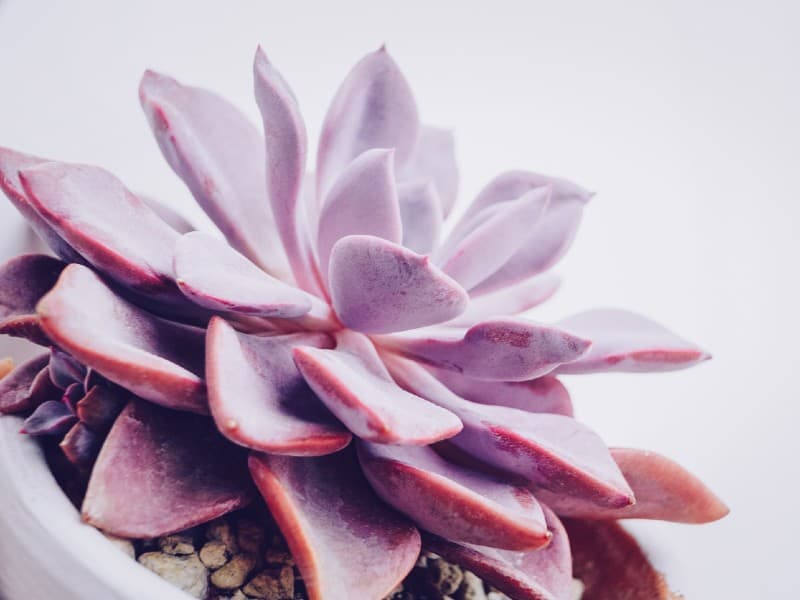
Propagating this plant is super easy. You can propagate Debbie’s from offsets, leaf cuttings, and seeds. Read through the following sections to learn what to do.
Seeds
Purchase seeds from a reputable distributor and plant between 10 to 20 seeds in a tray. Use unfertilized cactus potting soil, poke your finger about an inch into the soil, and place the seed in the cavity. Cover the seed with more potting soil and water the tray every two to three days until the seeds have germinated. Once the juvenile succulents have an established root system, you should move them into individual pots to further develop.
Cuttings
Using leaf cuttings for propagation is the most common way to propagate Debbie succulents. Twist a healthy leaf from the main stem and leave it to callous over for a day or so before planting it in cactus potting soil.
Offsets
Debbie succulents produce a lot of offsets throughout its life. Removing the offset is not only good for propagation, but it also keeps the overall look of the plant neat and tidy.
You will need to use a sterile knife to remove the offset from the mother plant for the best chance of success. Offsets are the easiest part of the plant to propagate, and they look wonderful straight away.
Garden centers and other plant shops sell their propagated plants, so once you get good at propagating your succulents, you could always sell them or give them away to friends and family members.
Common Pests and Problems
Debbie is a very hardy succulent, but that doesn’t mean that she is completely indestructible. Indoor succulents are less prone to attracting insects and developing diseases, but outdoor plants are always exposed to infestation and infection.
Aphids and mealybugs are common graptoveria succulent pests, but you will be able to spot the pests if you closely inspect the base of the plant. Although these pests are not going to harm succulents, they should be removed as soon as they are spotted.
Root rot and powdery mildew are more serious issues that often go unnoticed until it is too late. Root rot is caused by overwatering, if the soil is too dense, due to the plant being potted in a pot that doesn’t have good drainage.
Determining what caused the root rot is difficult, and because of this, you should re-pot the succulent in porous succulent potting soil and change its pot to prevent this from happening again.
Top Tip: Remove the damaged areas of the plant with a sterile knife. You can also try to propagate the succulent from healthy cuttings if you think that the plant is too damaged to replant. Never leave a damaged or diseased section on the plant as it could spread or stop the mother plant from growing.
Sources: https://extension.illinois.edu/blogs/hort-home-landscape/2015-06-04-propagating-succulents-and-cacti


